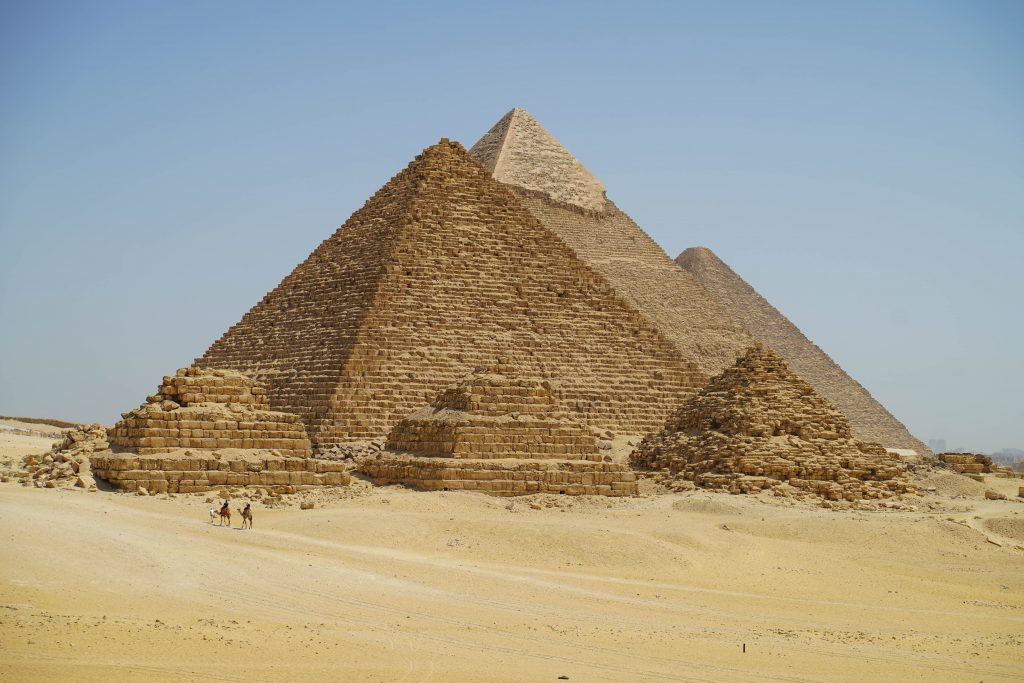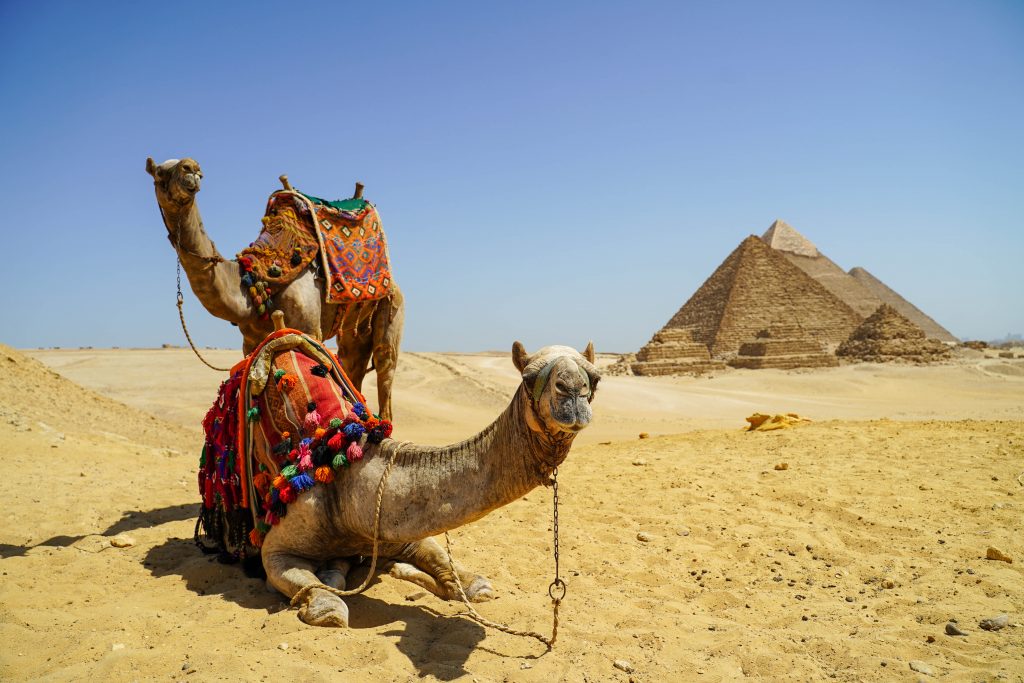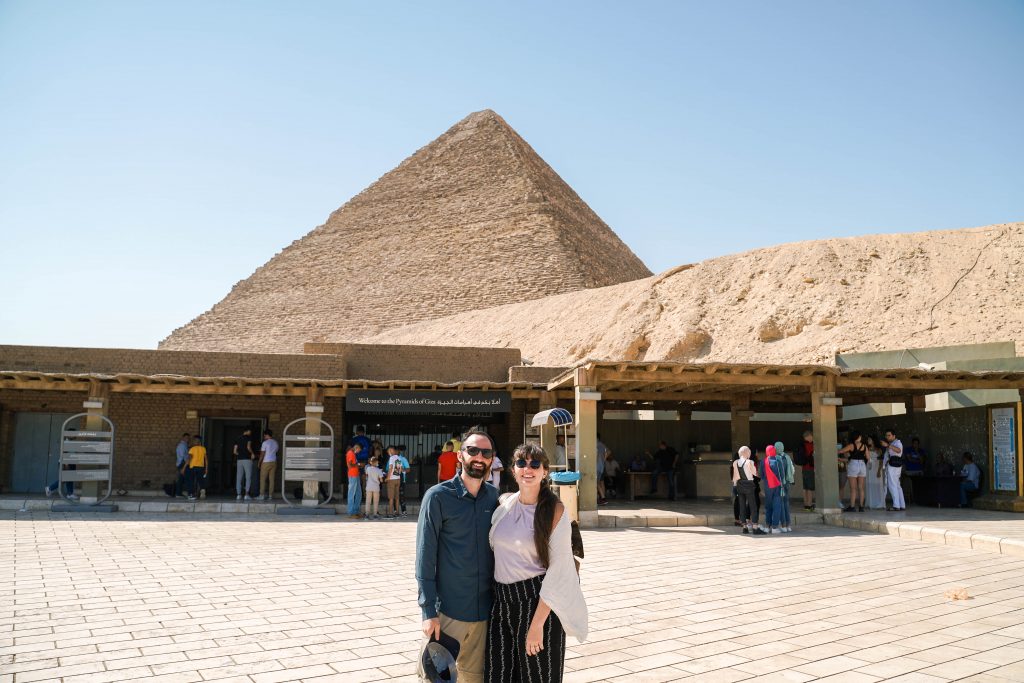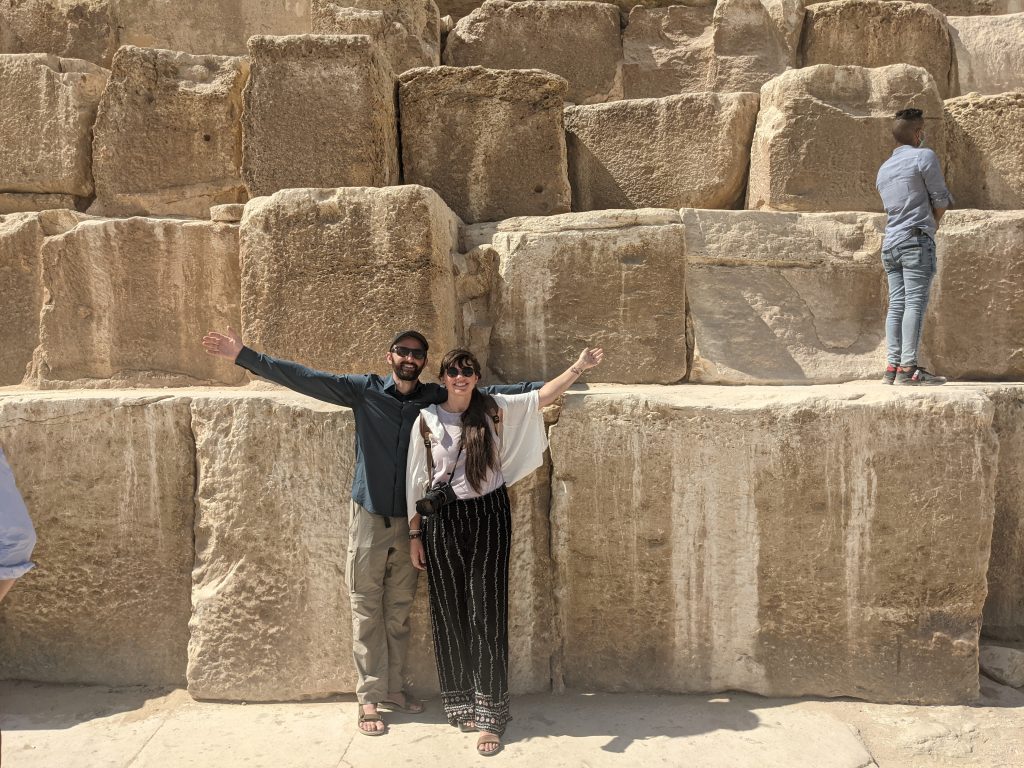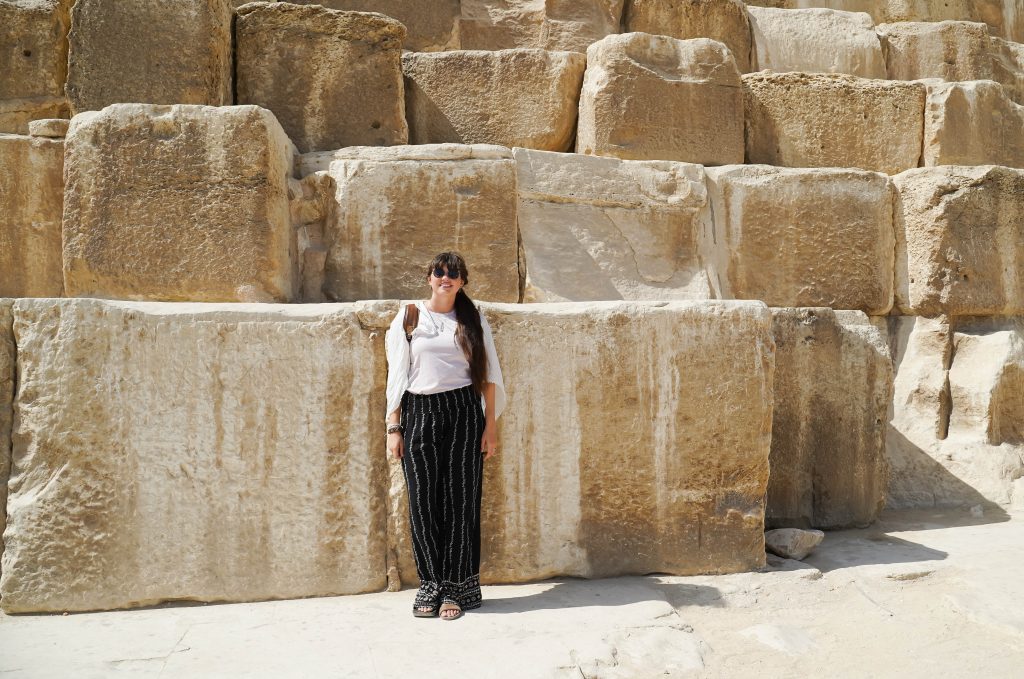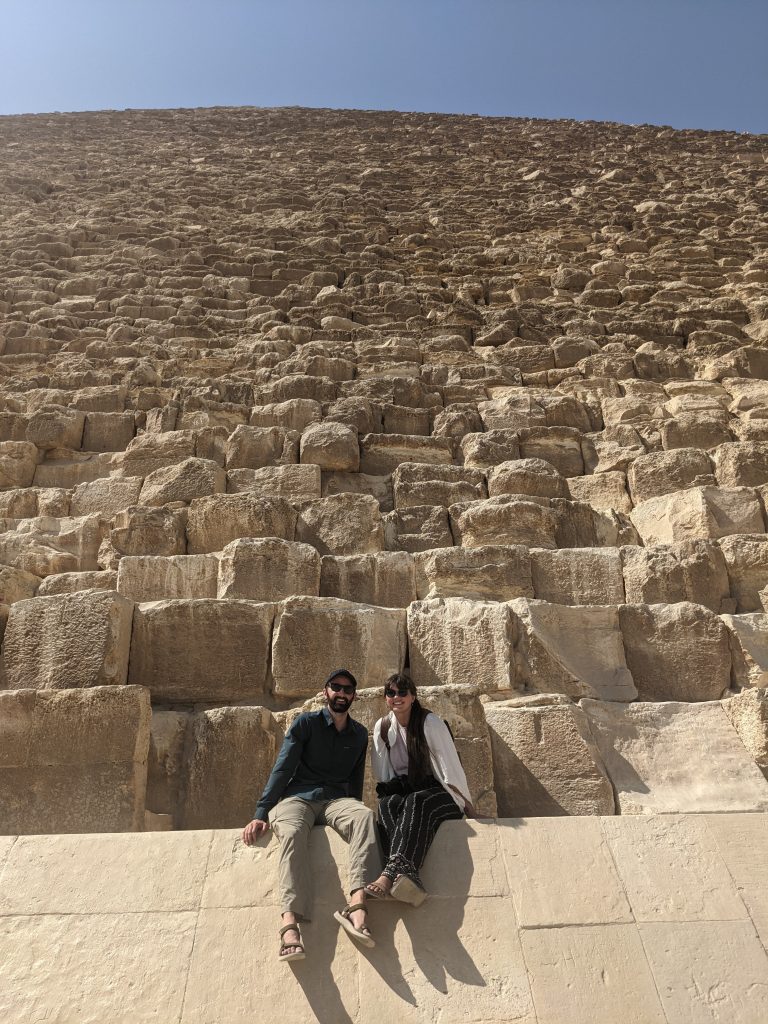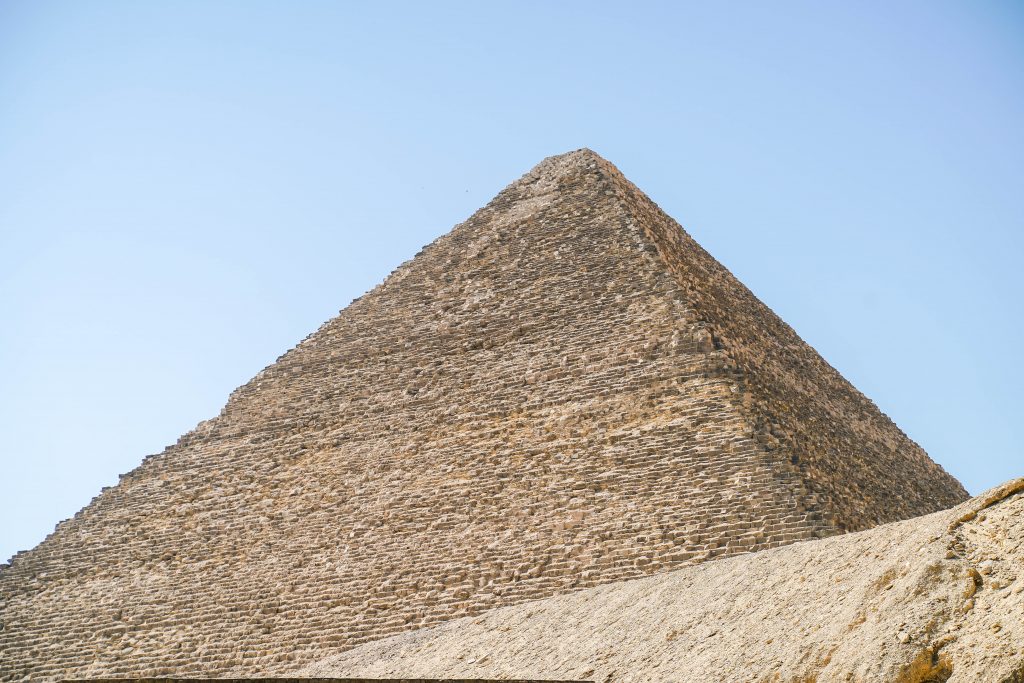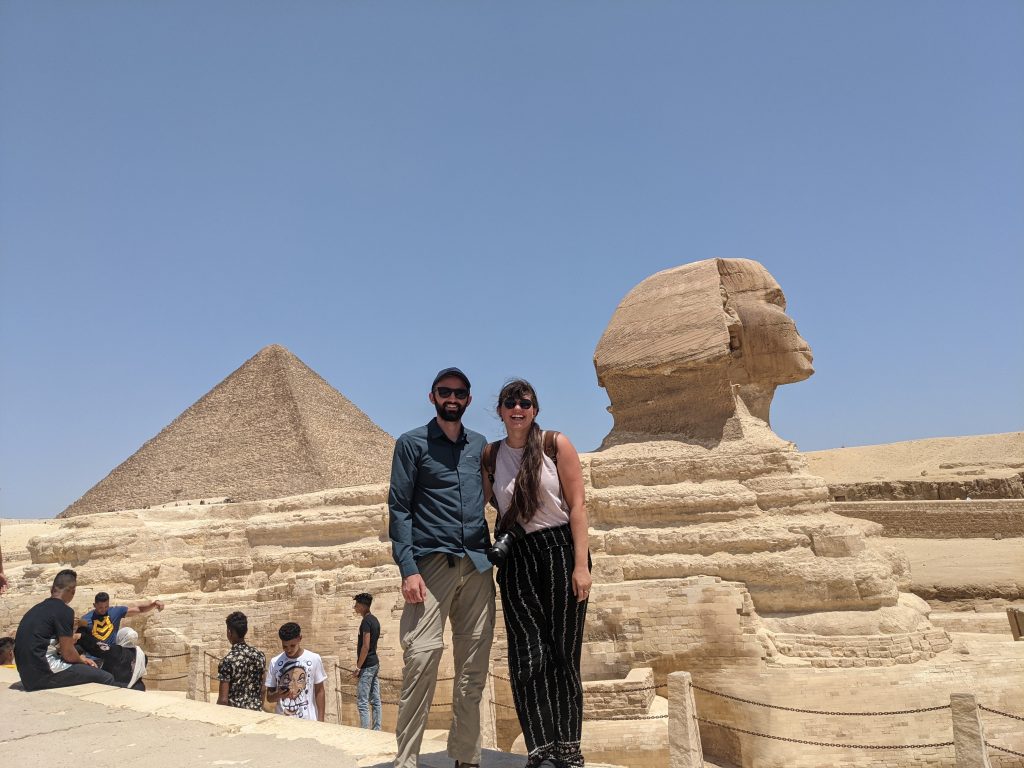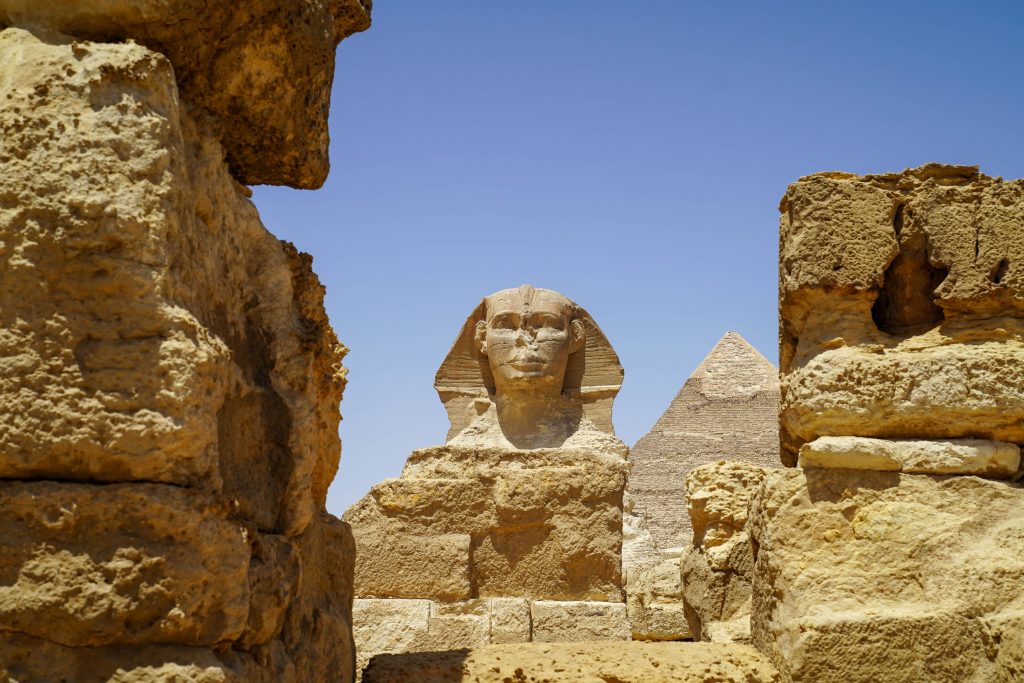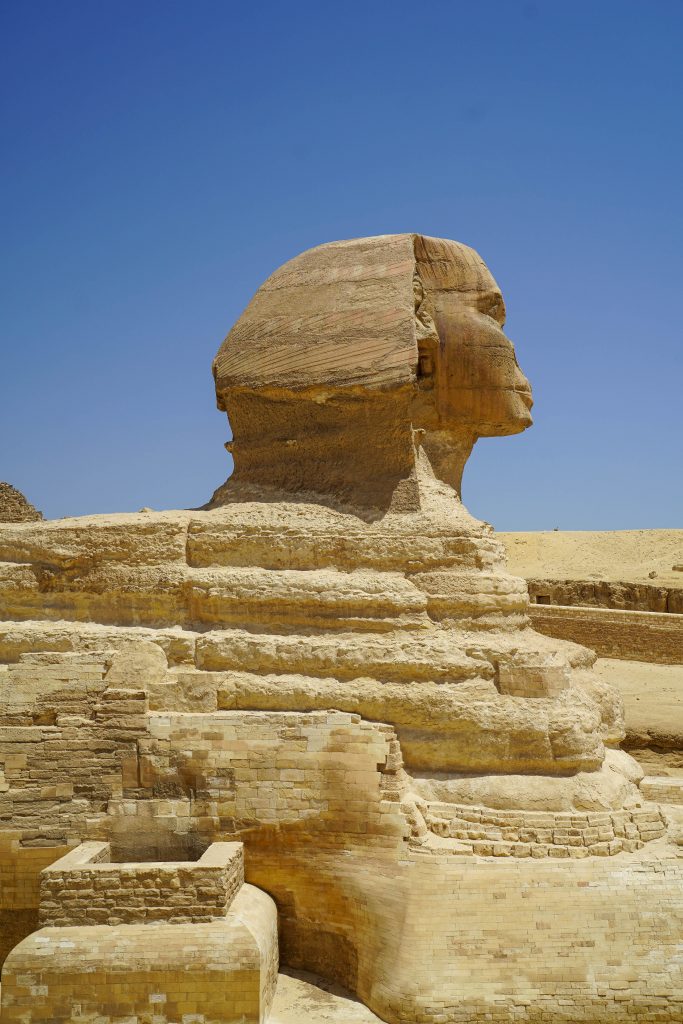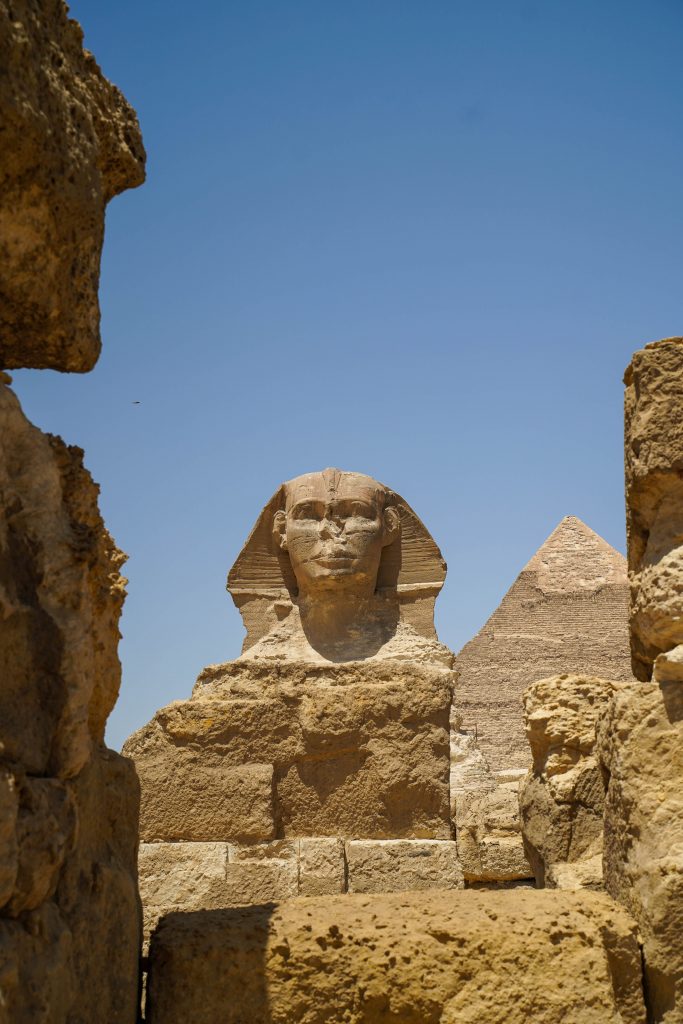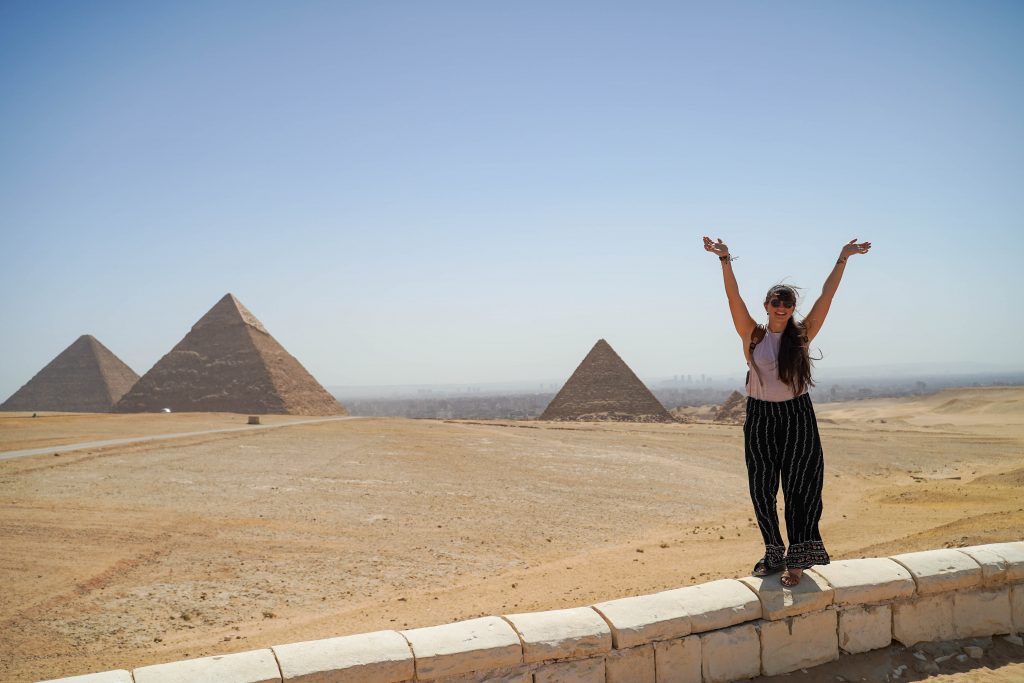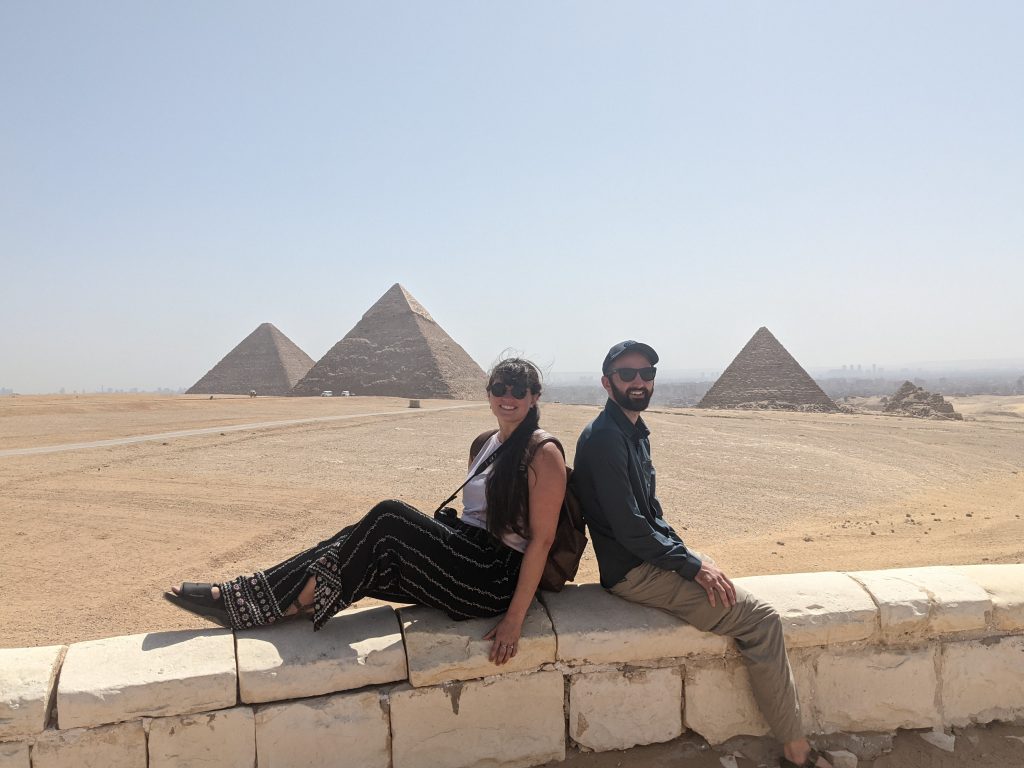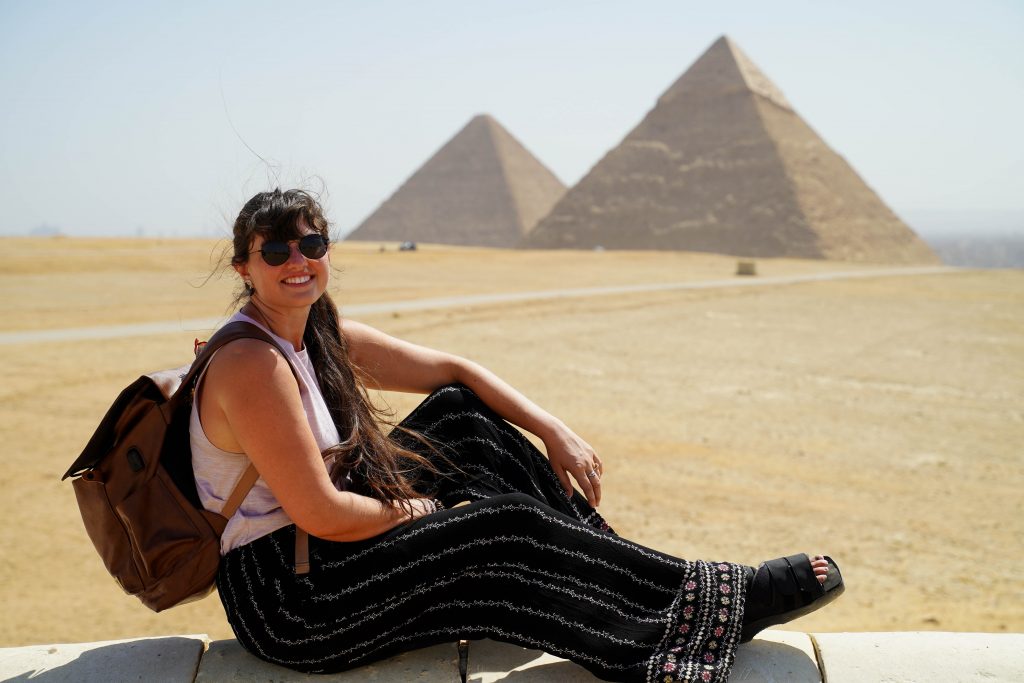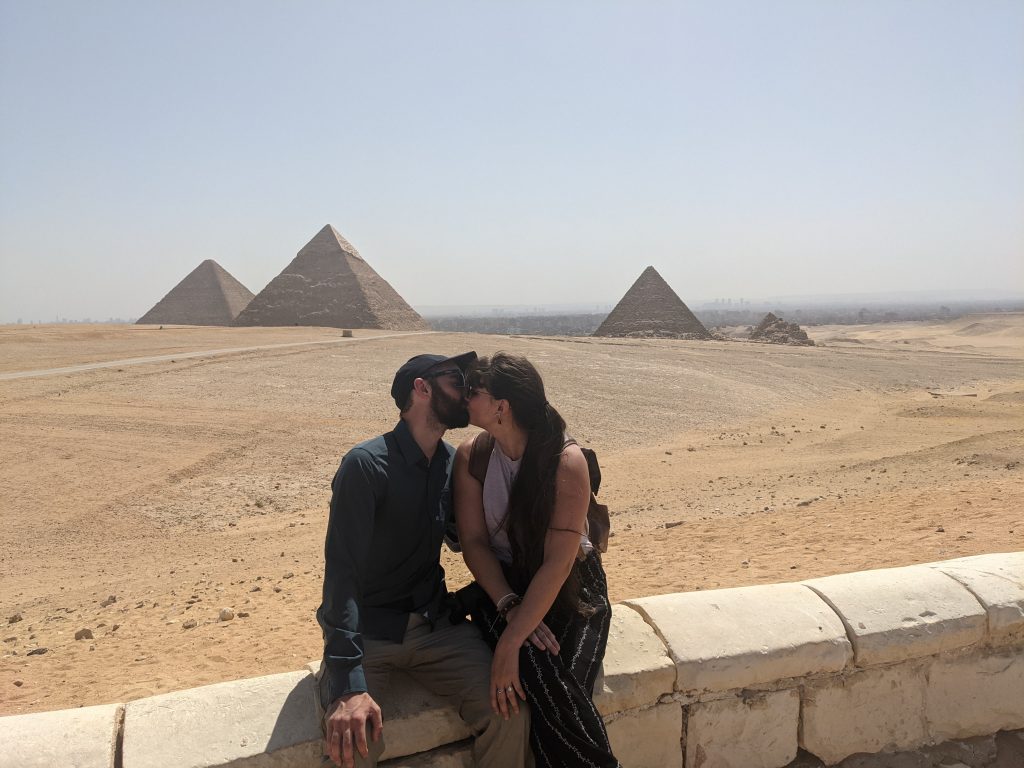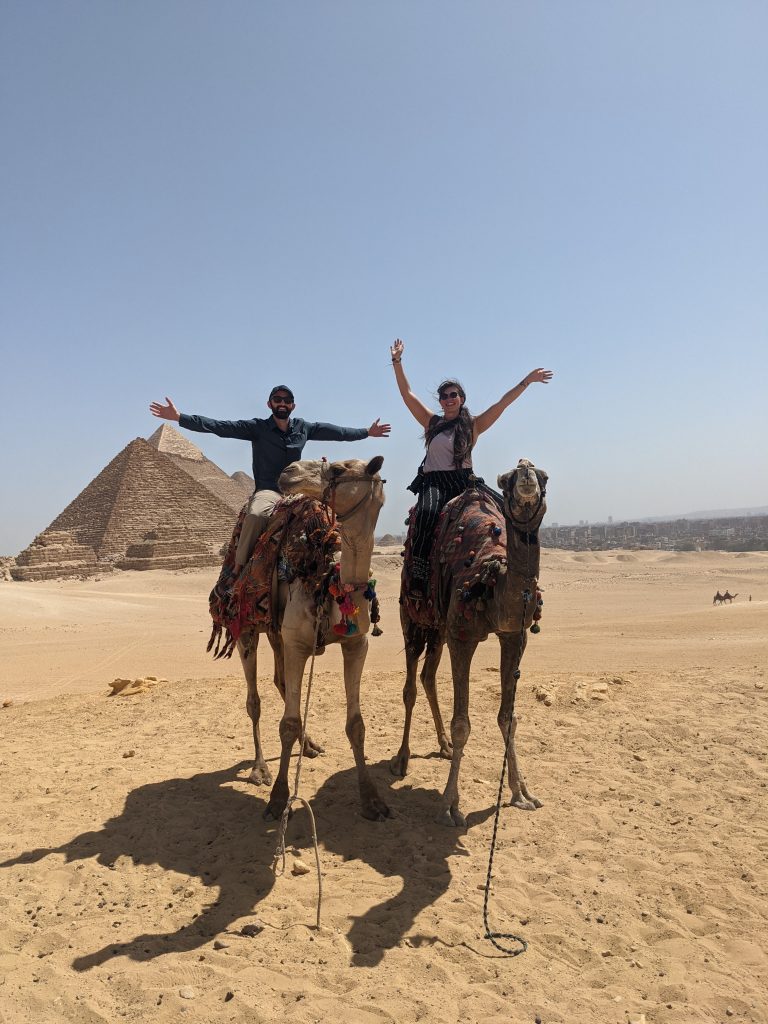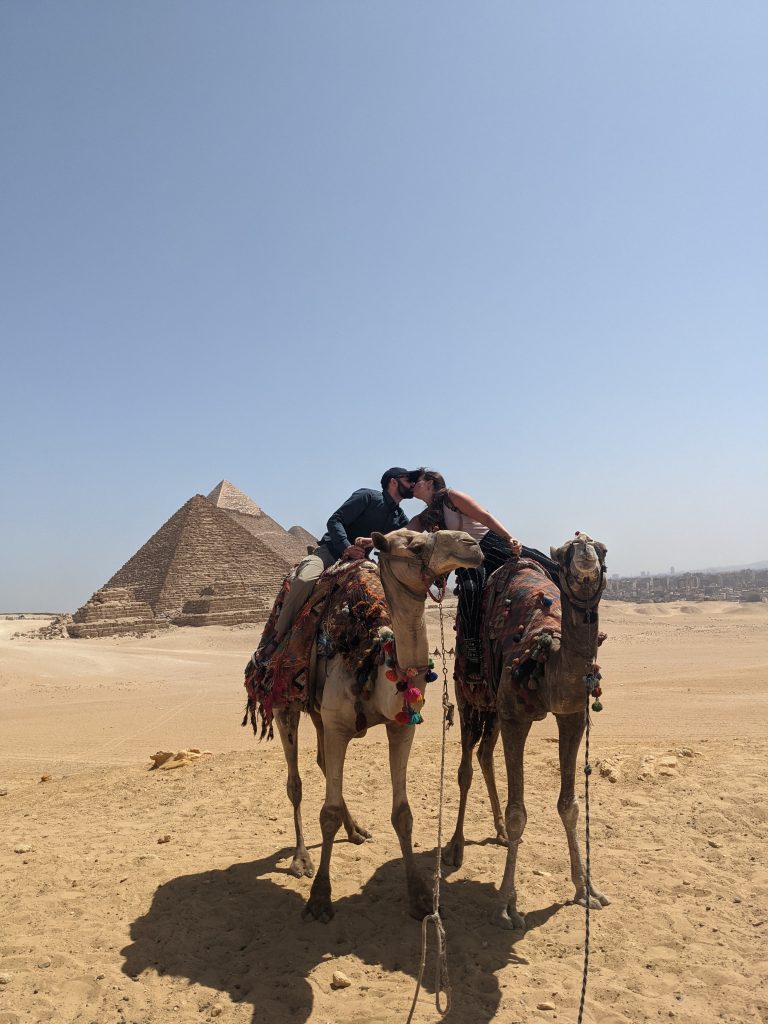The number one thing to see on any trip to Egypt is of course, the Great Pyramids of Giza. The pyramids are located in Giza, a stone’s throw away from Cairo and are easy to visit (although going with a guide is still recommended.)
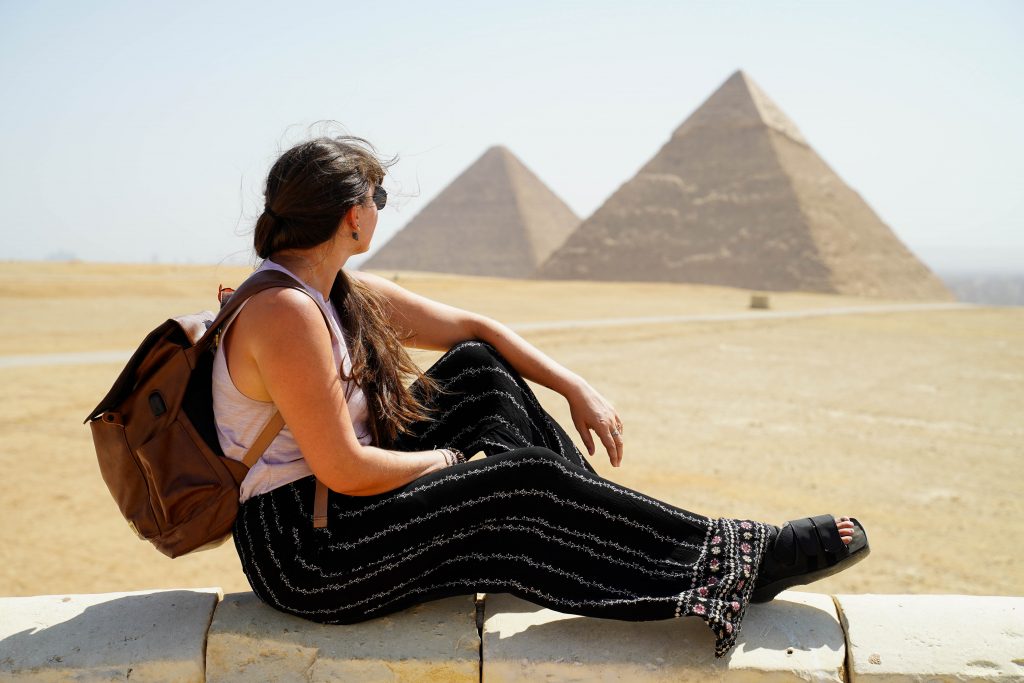
Contents:
- About the Great Pyramids of Giza
- Top things to see at the Giza plateau
- The Great pyramid (also known as the pyramid of Khufu)
- Going inside of the Great Pyramid
- The Pyramid of Khafre
- The Mortuary and Valley Temples of Khafre
- The Sphinx
- Panorama Point
- How long of a visit do you need
- Camel Rides at the Pyramids
- Where to stay near the Pyramids of Giza
About the Great Pyramids of Giza
The Giza pyramid complex is composed of 9 pyramids in total. The 3 large pyramids were built in order to house the remains of the deceased pharaohs of Egypt and the smaller pyramids in sets of 3 were built to hold queens/ family members. The pyramid structure was a religious symbol in thought that at the highest point, they would touch the sky. The belief was that the king’s spirit would continue on as a god of the sky and would rise and set with the sun- so being close to the sky was of vast importance. Each pyramid would additionally have at least one mortuary temple built for the pharaoh and used only once to celebrate that king’s life and perform the mummy rituals preparing for afterlife.
Things to see at the pyramids:
The Great pyramid (also known as the pyramid of Khufu)
The Great Pyramid is the oldest and largest of the pyramids. It’s also the oldest, most intact building of the Seven Wonders of the Anicent World. It was the first pyramid to be built and is estimated to have taken 27 years and was completed sometime around 26 BC. The dimensions of the pyramid are a base length of 756.4 ft. (230 m) and height of 481.4 ft. (147m).
The structure of the pyramid
There are 3 chambers known inside the pyramid- a base chamber, the queen’s chamber, and the king’s chamber. The royal chambers contained granite sarcophagus and were located fairly high up within the pyramid structure. The pyramid was built with many different types of rock with the most notable including giant granite blocks quarried from Aswan used for the king’s chamber, and white polished limestone for the outside. It’s estimated to be built from 2.3 million blocks of limestone making the pyramid structure almost entirely filled with stone apart from small shafts and the 3 known chambers. There’s only a small amount of the white polished limestone left visible along the base of the temple so what is visible now on the outside is NOT what the finished pyramid would have looked like when it was built. (It would have been smooth and polished)
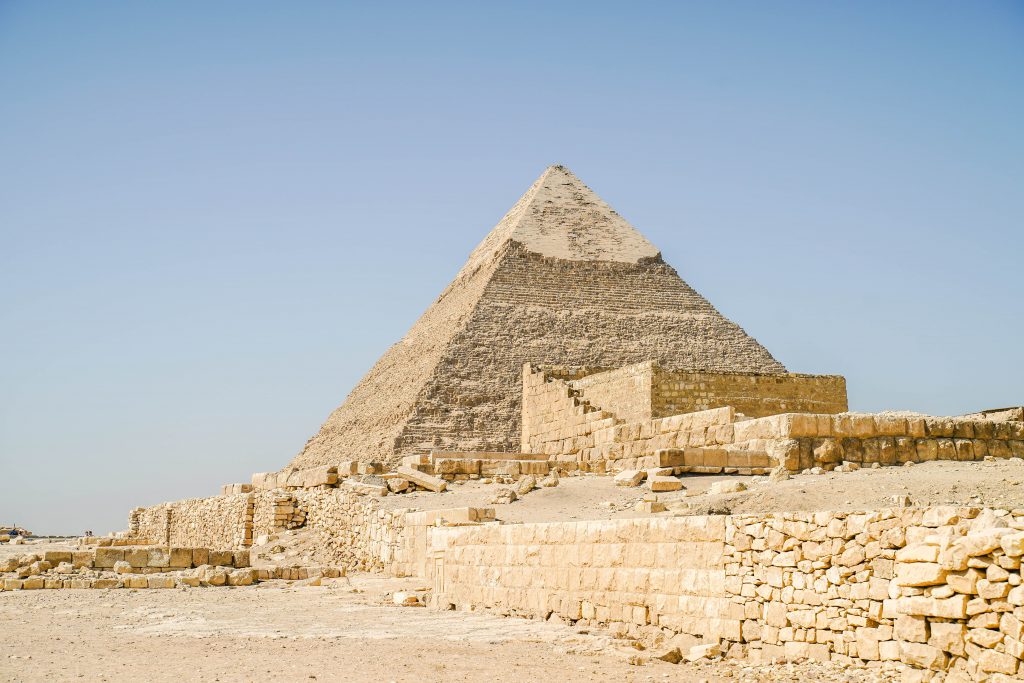
Building the great pyramid:
Other things to note about the great pyramid is that it was estimated to have taken an average of 13,200 laborers to complete this pyramid within 27 years with a peak workforce of 40,000 people at a time. Based on findings in excavated laborer camps near the pyramid, it’s believed the pyramid was not actually built from slave labor, but more of a conscript workforce.
The pyramid was built for King Khufu who ruled during the 4th dynasty of the Old Kingdom. (most other archeological sites in Egypt are from the New Kingdom or younger) Not much is known about Khufu’s reign besides the great pyramid and the only preserved portrait of the king is a small 3-in ivory figurine that was in a temple ruin at Abydos.
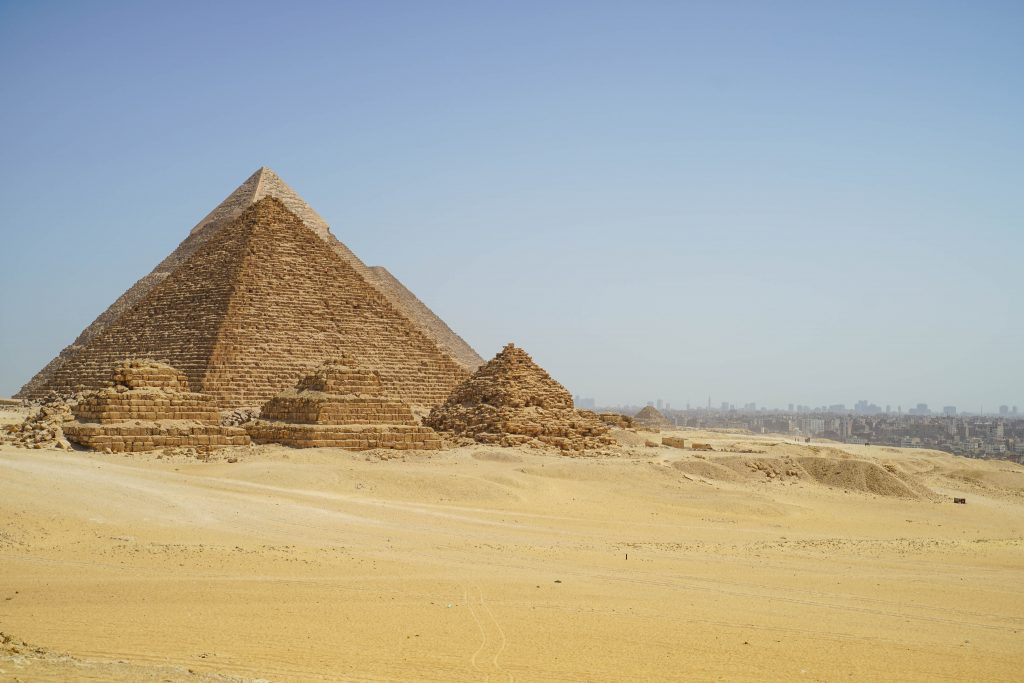
The 3 subsidiary pyramids known as the Queen’s pyramids that were also built by Khufu and are still in good shape today.
Going inside the pyramid
A visit to the inside of the Great Temple costs about $20 more per person and you only see plain hallways of stone. If we’d had time we would have considered it just for the experience of entering a pyramid. If you are clausterphobic it is not recommend. Unlike the valley of the kings, the walls are unadorned and the hallways tight, dark, and smelly. So, it’s up to you on how worth it you think it is.
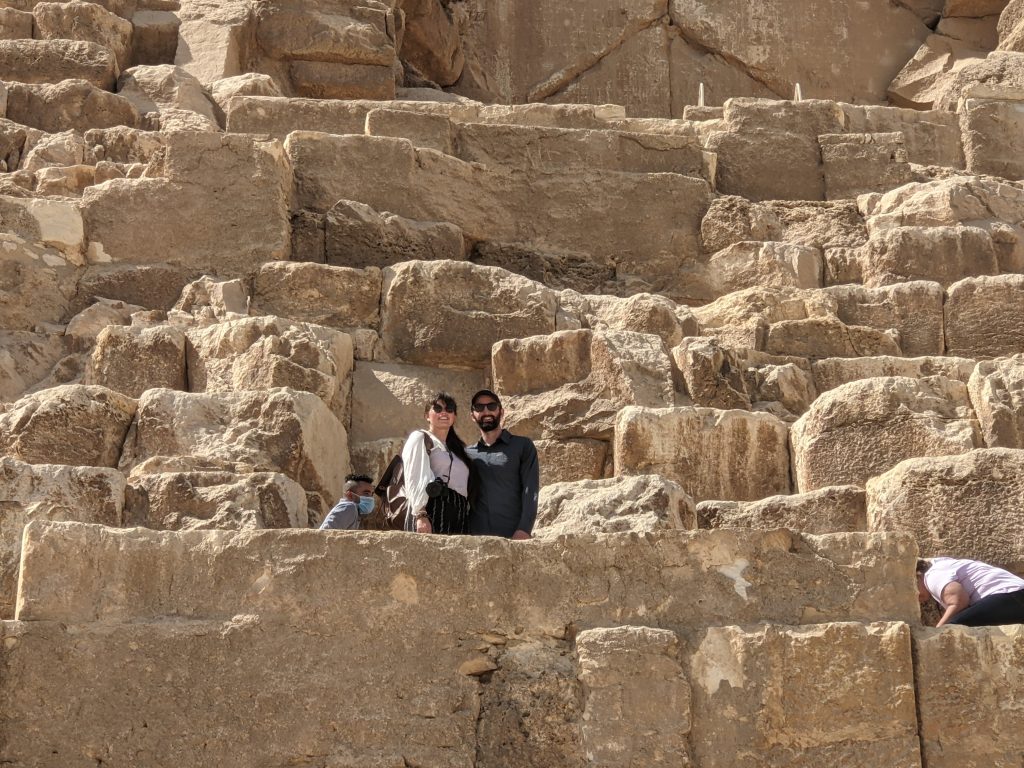
The Pyramid of Khafre
This is the second-tallest and largest of the 3 Ancient Pyramids of Giza. It’s notable for the polished limestone cap that shows what all 3 pyramids would have looked like in their entirety back in the day. It appears from some angles as the largest pyramid due to the ground height it is built on. It was frowned on to build a pyramid taller than your predecessor, so Khafre found a way around this by building a smaller pyramid but on bedrock 33 feet (10m) higher than Khufu’s.
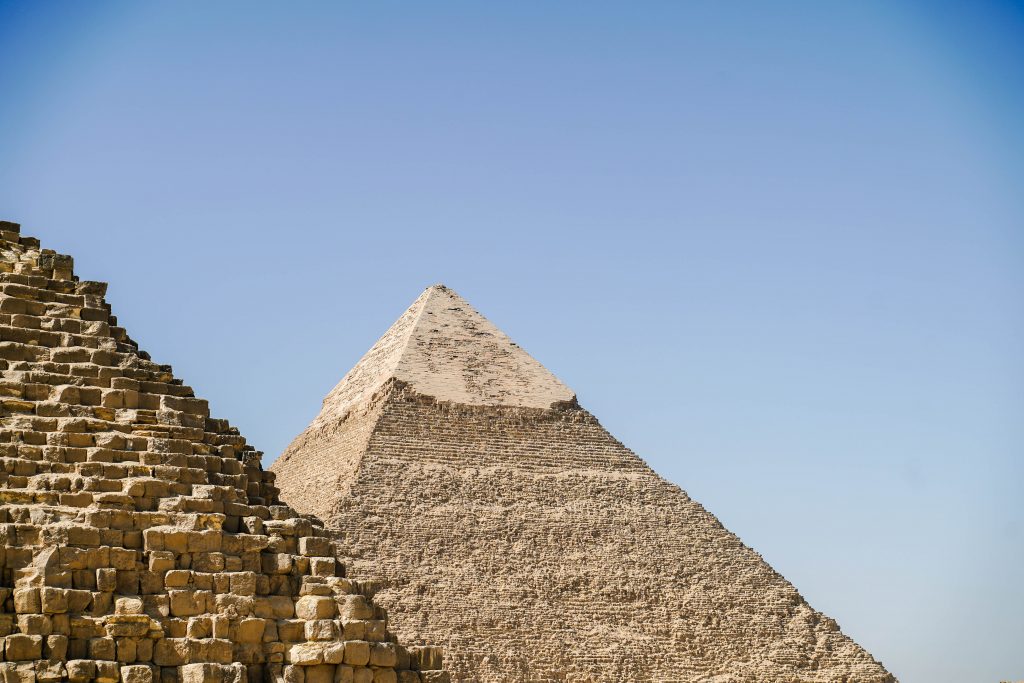
The Mortuary and Valley Temples of Khafre
The temples of Khafre’s complex survived much better than Khufu’s. The temple is most notably known for its proximity to the Sphinx although the Spinx itself is not attested to any king. (more on that below) That temple once contained 24 statues of Khafre that are now only represented by depressions in the floor where they used to be. The mortuary temple, although in ruins, has enough remaining to understand the layout. It’s notable for being the first mortuary temple to include all 5 standard elements of later temples: an entrance hall, a columned courtyard, 5 niches for statues, 5 storage chambers, and an inner sanctuary.
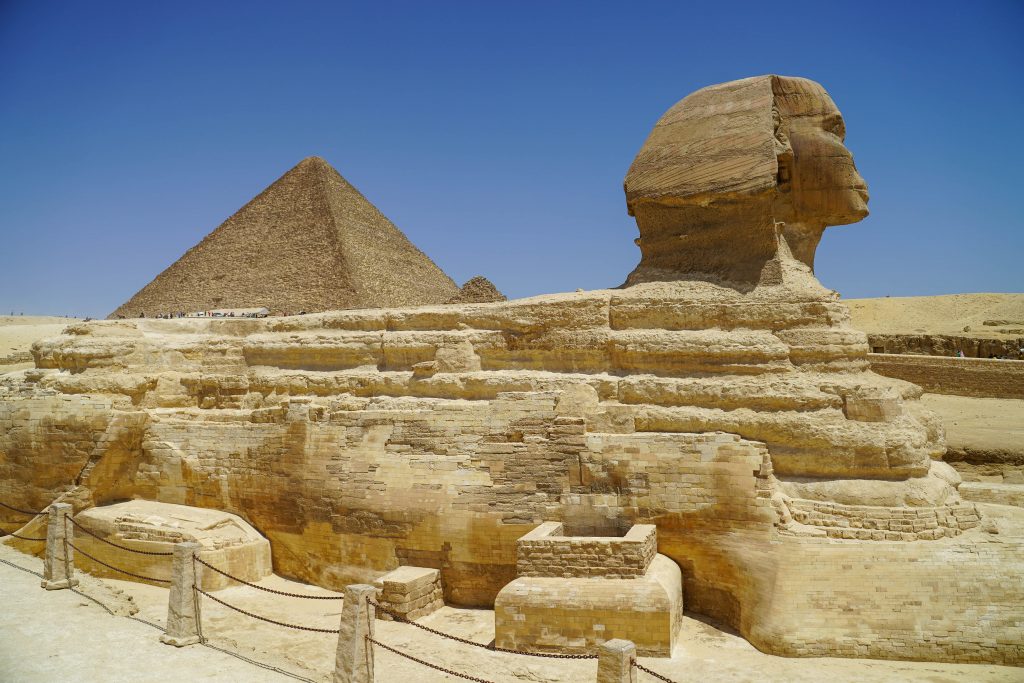
Sphinx
The Great Sphinx of Giza is made of limestone facing directly west to east. While there’s no direct documentation linking the Pharoah Khafre with the Sphinx, the plans for his temples surrounding it as well as similarities in the carved face to his statues point to him commissioning the statue. The purpose of the statue is unknown. Our guide told us a theory of there already being a large rock formation there (or even a more ancient statue) that was in the way of Khafre’s temples. Instead of dismantling it, it would be less work to just carve the bedrock stone into a statue itself.
Regardless of the reason, the sphinx is an impressive and legendary site to see in person. It measures 240 feet long (73 m) from paw to tail, and 66 ft. (20 m) high from the base to the top of the head. It’s best seen from the Valley Temple while visiting in there although make sure to capture it head on before entering the temple.
The pyramid of Menkaure
The final pyramid of the 3 main pyramids at Giza is thought to be the tomb of the 4th dynasty pharaoh Menkaure. Like its predecessors, it was constructed of limestone and Aswan granite. However, this pyramid was unfinished and several of the casing blocks are visibly unfinished as well. This pyramid gives great clues at the construction methods used by the old kingdom stone masons.
Panorama Point
The best spot for photos with the pyramids in the background. You’ll want to take your hired car, or if you’re on a tour, wait to be driven out to this spot. It would be an awfully long walk from the main pyramid entrance.
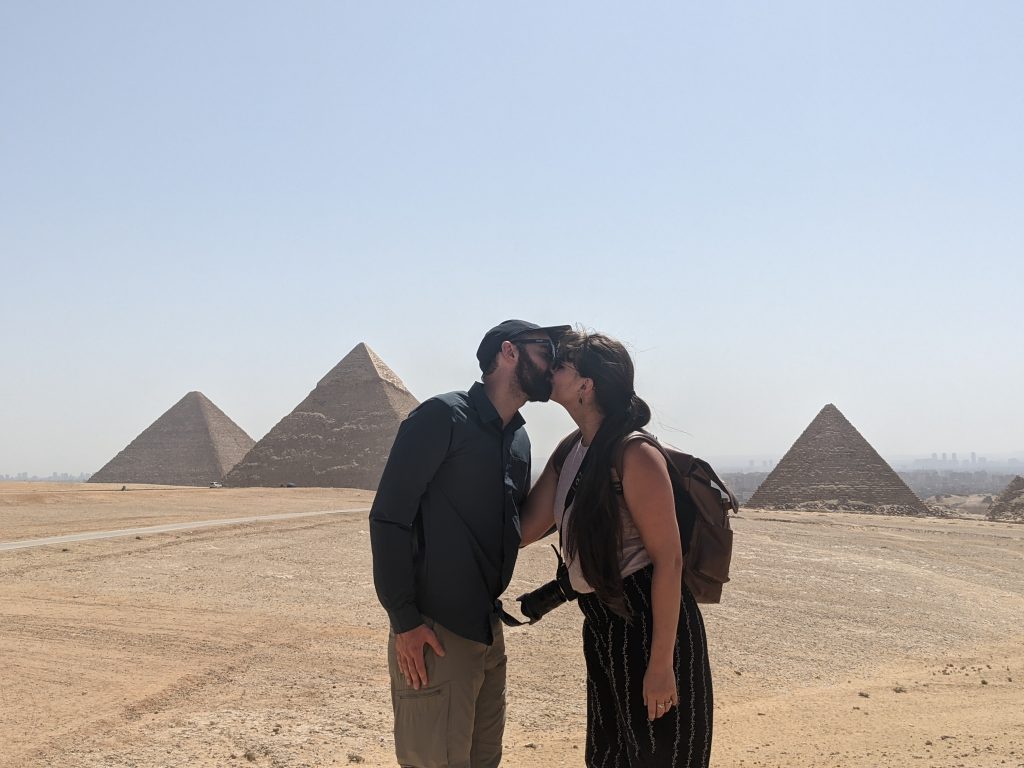
How long do you need for your visit to the pyramids?
To walk around the outside of the pyramids and visit the Sphinx and Mortuary Temple, you only need about 1- 1.5 hours. If you want to take a camel ride, or go inside the pyramid then you will need to add more time. We did a 40 minute camel ride but had less time to visit the temple so we only spent around 2 hours total here.
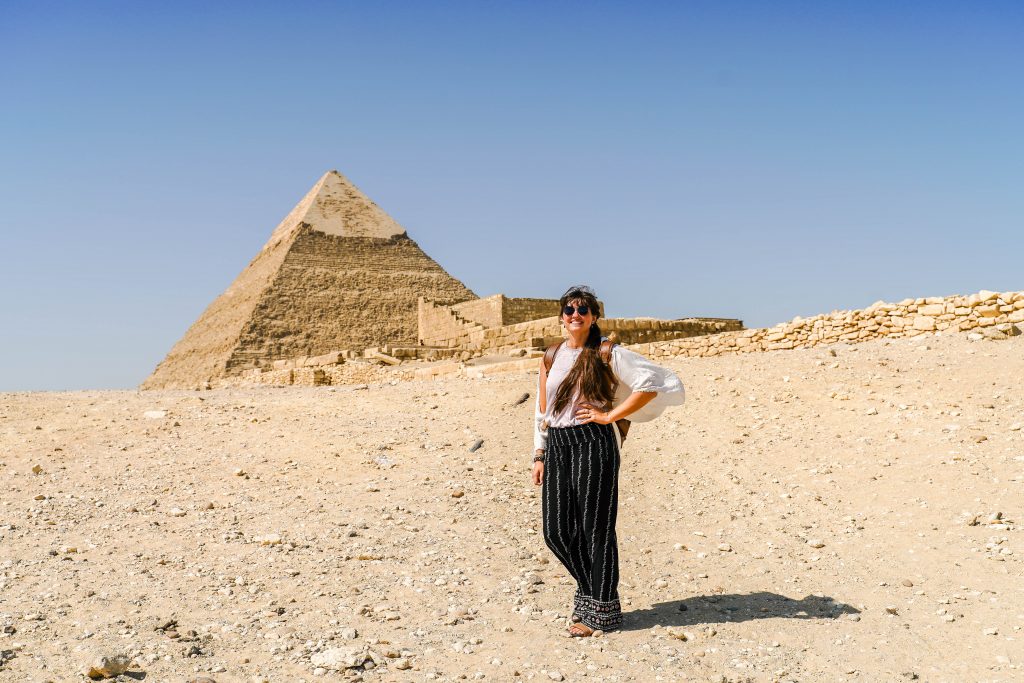
Is a camel ride worth it?
This is a pretty controversial question and since everyone has different experiences, you may not always get the same answer. Based on our experience, I would say YES (read more below), but know what to expect. Here are the pros and cons based on our experience:
Pros:
- Some trails and vantage points are just not doable by foot but taking a long camel ride will give you more perspectives of the pyramids
- Amazing photos in general with the camels
- A memorable experience
Cons:
- Like all of Egypt- this experience is prone to scammers and overly zealous tip collectors .
- Not all camels were in the best of shape.
- Riding down hill is challenging and camels might not be the most comfortable experience on your body
Read my separate post here for more info on our experience and tips to make the best of your camel ride.
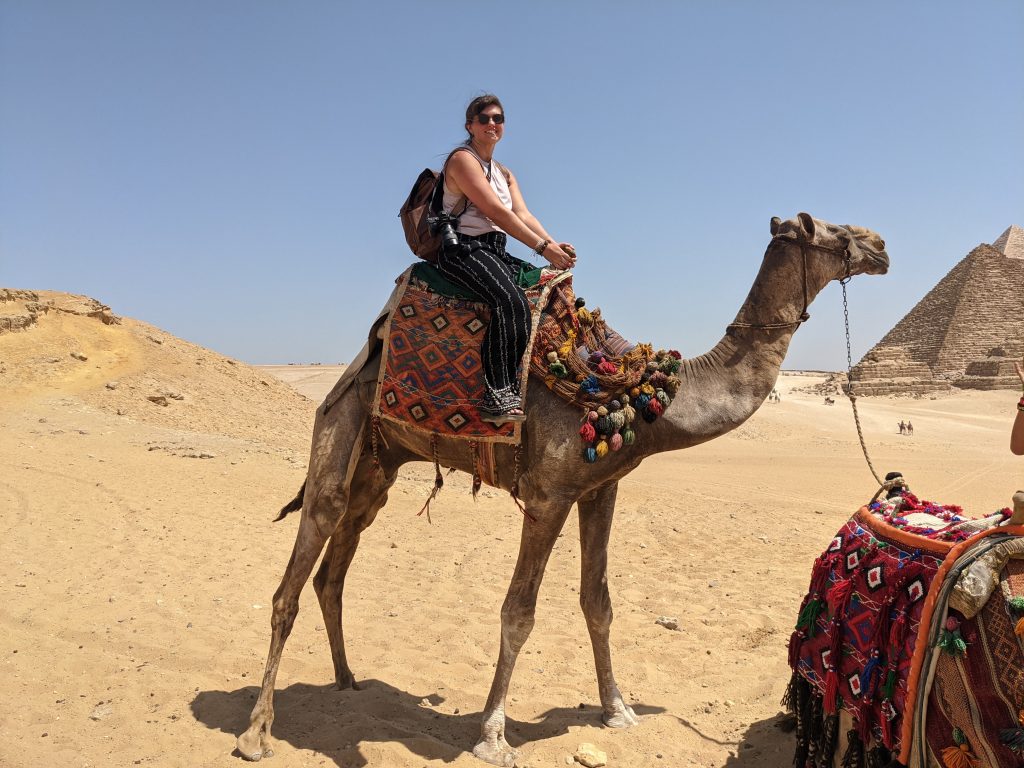
Where to stay for a visit to the Pyramids of Giza?
Steigenberger Pyramids Golf Hotel $50+ – Luxury hotel feel on a budget wallet. The hotel has a pool with pyramid views. Some rooms have pyramid views and others have views of the new museum. Once the new museum is complete, this hotel is across the street in an unbeatable location. We stayed here and sadly only had like 6 hours in the hotel due to late flight in, and early flight out. We didn’t get to enjoy the pool but our room was very comfortable and the breakfast box the hotel provided for our flight was the BEST of our entire trip.
Other hotels of note:
Hayat $30+ Budget friendly and still within walking distance of the pyramids
Marriot Mena house – $200+ – Walking distance to the pyramids, very safe, and VERY nice. Easily the best pool.
